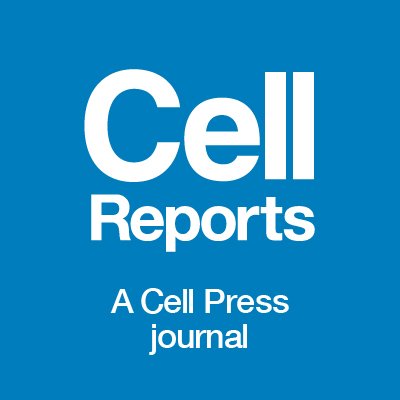
Maximilian Billmann
@maxbillmann
Followers
285
Following
962
Media
11
Statuses
551
Asst Prof @UniBonn @UniklinikBonn | dataScience, ML, funGenomics, CRISPRscreens | Postdoc @UMNComputerSci @DonnellyCentre | PhD @Michael_Boutros @wolfgangkhuber
Bonn, Germany
Joined August 2015
Happy to share our critical evaluation of reproducibility metrics for context-specific CRISPR screens with my former colleagues @henrynward @Michael_Aregger @UMNComputerSci @DonnellyCentre and my first paper at @UniBonn @UniklinikBonn
3
8
22
Excited to share my project w/@srviswanathan on virtual CRISPR screening -- predicting cancer dependencies from RNA sequencing alone. On unseen rare tumors, nearly every predicted dependency validated experimentally! Creating a framework to rapidly go from patient → treatment
1
25
112
Core genetic and cellular principles seem to be stable across cell types - important for discovery.
The answer is skin cells. Skin cells! That seems really odd, but lots of cells share lots of components and processes that are used in different ways in different cell types. And not-fun fact: psychotic symptoms are associated with skin abnormalities.
0
0
1
Can we understand biology from "infinite" amounts of perturbation data ? - Only if we measure the relevant molecules. Perturbations and data scale 𝐜𝐚𝐧𝐧𝐨𝐭 compensate for missing the relevant molecules. 🧵
7
35
152
Can you find therapeutic targets for cardiomyopathies using simple, clean genetics in a human cell line?
nature.com
Nature - The enzyme ABHD18 is shown to have a key role in cardiolipin metabolism in mitochondria, offering a potential route for a small-molecule treatment of the rare genetic disease Barth syndrome.
0
0
0
In @NatRevGenet we outline strategies for in vivo pooled (single cell) CRISPR screens for genotype → phenotype mapping in animal models. This contains over a decade of hard earned knowledge by us and the field. Kudos to @AntonioSantinha & Alessio Strano. https://t.co/xtSjG7Ep4v
2
7
54
Congrats @tschaharganeh, @BreinigMarco and colleagues! Great to see this out.
We are happy to share our latest paper @natBME spearheaded by @BreinigMarco. Together with @MoritzGerstung we hack commercial #spatialtranscriptomics @10xGenomics to decode #phenotypes from #genotypes in #cancer: https://t.co/JTXzMkDiCW
@DKFZ @uniklinik_hd
0
0
0
The Perturbation Catalogue is here! A new platform unifying perturbation data from CRISPR screens, multiplexed variant effect assays and gene expression data in one place. The beta version is now live. Find out more and try the platform: https://t.co/l45kuYPVGN
1
1
9
Phenotypic screens for SIRPA expression reveal RAB21 as a general regulator of macrophage surface identity
cell.com
Through CRISPR screening, Granda Farias et al. find results consistent with cis CD47-SIRPA interactions relying on QPCTL and that RAB21/Rab21 inactivation reduces macrophage model surface SIRPA/Sirpa...
1
5
41
Online now!✨RESEARCH: Sun et al perform a CRISPR/Cas9 screen in aged mice and identify Clusterin as a driver of myeloid bias in aged HSCs, via regulation of mitochondria https://t.co/obLp8sfL3q
nature.com
Nature Aging - Performing a CRISPR–Cas9 screen in aged mice, Sun and colleagues identify clusterin as a driver of myeloid-biased hematopoietic stem cell differentiation in aging, through...
0
5
22
Agreed! We cannot "wet lab" our way through the entire matrix of genes x genes x cell types x environments.
Excited to see the Virtual Cell competition hosted by Arc Institute. We cant "wet lab" our way through the entire matrix of genes x cell types x environments of interest in biology. Cell state models will accelerate progress. https://t.co/NYflPphVT6
0
0
2
Out now in @CellReports our collab w/ @BiedererLab on image-based pooled genetic screening to identify regulators of synapse formation
cell.com
Le et al. performed image-based pooled CRISPR screens to elucidate mechanisms driving synapse formation. This work established a scalable approach to map functional interactions guiding the activity...
1
6
17
I wrote a review of a recent paper on false discovery and multiple testing correction.
liorpachter.wordpress.com
In the Nature paper “Spatial transcriptomics reveal neuron–astrocyte synergy in long-term memory” published on March 14th, 2024, authors Sun et al. claimed to identify cell-type specifi…
2
32
216
RT @mo_lotfollahi: Integration metrics for batch effects evaluates could be hacked! @hcwww_ and Aviv picked this up and proposed new metric…
0
1
0
Agree. 25% is pretty good. What is the bigger challenge - FP or FN?
Counter point -- a 25% replication rate is remarkable given the complexity and variability in living systems Innovative methods, resource limitations, publication bias, and data complexity all affect results. This isn't about "good science", but the nature of biological research
0
0
0
Can AI-designed binders degrade, aggregate, stain and enrich endogenous proteins in human cells? Check out our new preprint! https://t.co/ypmpbRfL4e
biorxiv.org
Transposon-Display is a highly scalable screening method that links proteins to their encoding DNA during expression in E. coli via a mutant transposase. Leveraging this system, we identified...
1
21
85
Our paper has been published @NatureGenet! Through new statistical methods, we shed light on fundamental questions about cellular response to genetic perturbations. Our work is a substantial advance towards rigorous characterization and comparison of massive perturbation atlases.
How do genetic perturbations change cells? How are these effects shaped by cell type and dosage? How do we best extract insight from modern massive perturbation atlases? Im pleased to share a new preprint where we develop a suite of statistical approaches to these Qs (link below)
6
23
125
Thrilled to see this “veritable tour de force” led by @John_C_Fielden from @jcornlab out @nature, https://t.co/p0VlZXgE4k. This @ERC_Research funded project uses #CRISPRi to systematically scan 548 DDR genes for synthetic lethal interactions, ~150,000 pairwise combinations!
2
5
23





















